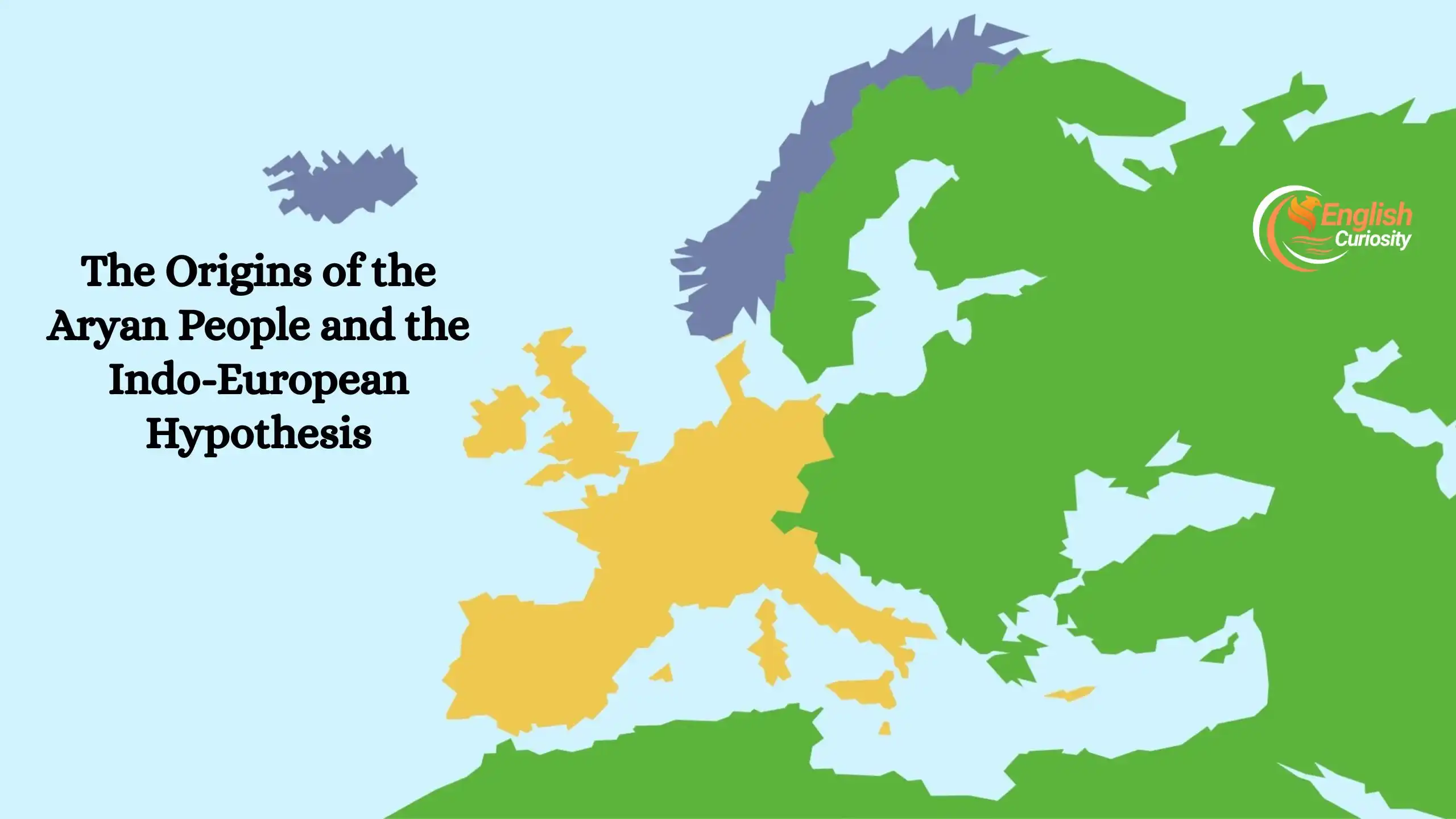Explore the historical, linguistic, and archaeological theories surrounding the origins of the Aryan people, tracing their migrations, cultural impact, and the evolution of the Indo-European language family.
The Origins of the Aryan People
| Historical Fact | The Origins of the Aryan People and the Indo-European Hypothesis |
| Term “Aryan” Origin | Derived from the Sanskrit word ārya, meaning “noble” or “honorable.” Originally a self-designation used in ancient Indo-Iranian texts. |
| Linguistic Evidence | “Aryan” traditionally refers to speakers of Indo-Iranian languages, a branch of the Indo-European language family. |
| Proposed Homeland | Theories include the Pontic-Caspian Steppe (modern-day Ukraine/Russia) and Central Asia as the Aryans’ place of origin. |
| Migration Patterns | Indo-Aryans migrated into the Indian subcontinent (c. 1500 BCE); Iranians spread into Persia; some moved into Europe. |
| Key Texts | Rigveda (India) and Avesta (Iran) are ancient texts referencing Aryan peoples and languages. |
| Archaeological Links | Associated with the Andronovo culture, Bactria–Margiana Archaeological Complex (BMAC), and early Vedic settlements. |
| Controversies | The term was misappropriated in the 19th–20th centuries, especially by racial ideologies (e.g., Nazi Germany), leading to widespread misuse. |
| Modern View | “Aryan” is now primarily used in a linguistic and historical context to describe Indo-Iranian speakers, not as an ethnic or racial category. |
The Origins of the Aryan People and the Indo-European Hypothesis
Introduction
Because the Aryans came to India as migrating pastoralists from mountainous regions to
the northwest of the Indian subcontinent, historians have sought to understand their origins. Sanskrit has provided important clues because it contains features similar to languages spoken at some point in Europe, Iran, and Central Asia. For example, although they are vastly different languages, Latin, Persian, and Sanskrit share similar sounds, vocabulary, and grammar.
Indo-European language family
On the basis of these shared traits, linguists have constructed a kind of family tree that shows the historical relationship between these languages. Sanskrit belongs to a group of languages used in northern India called Indo-Aryan. These languages are closely related to languages used throughout history in neighboring Iran. Together, all of these are called the Indo-Iranian language group. This language group is in turn one of nine branches of related language groups comprising the Indo-European language family.
Proto-Indo-European
Linguists assume these distantly-related languages share a common ancestor. They label that ancestral language proto-Indo-European and the people who spoke it Indo-Europeans. They posit a scenario whereby, in stages and over time, groups of these peoples migrated from their homeland to neighboring areas and settled down. Since this process happened over the course of many centuries and involved much interaction with other peoples along the way, the ancestral language evolved into many different ones while retaining some of the original features.
The homeland and history of the Aryans
One question, then, is the location of this homeland and the history of the peoples who spoke these languages as they changed. Many places have been proposed, but at present the most widely accepted scenario puts this homeland in the steppe lands of southern Russia, just to the north of the Black Sea and Caspian Sea.
Archaeological evidence
Evidence from archaeological sites suggests that during the third millennium an Indo-European people lived in this region as semi-nomadic pastoralists. They were likely the first to domesticate the horse and also improved the chariot by adding lighter, spoked wheels. They lived in tribes made up of extended families and worshipped numerous sky gods by offering sacrifices in fire altars.
The migration of the Aryans
At some point during this millennium and over the course of several centuries, groups of these peoples left their homeland and migrated south to the Iranian Plateau. By 2000 BCE, Indo-Iranian speaking pastoralists were living on the Iranian Plateau and in Afghanistan. Some among these evolved into the Indo-Aryan speakers living to the northwest of the Indus. It is these peoples that began to arrive in the Punjab from c. 1700 BCE, with their Vedic religion, kinship-based social order, and pastoral and farming way of life.
Conclusion
The origins of the Aryan people are best understood through a multidisciplinary lens that includes linguistics, archaeology, and ancient texts. While the term “Aryan” originally referred to Indo-Iranian language speakers who migrated from regions likely in the Pontic-Caspian Steppe or Central Asia, its meaning has evolved and, at times, been distorted by political ideologies. Today, scholars emphasize that “Aryan” is not a racial or ethnic classification, but a linguistic and cultural one tied to the spread of Indo-European languages and civilizations. Understanding the Aryans within this academic framework helps clarify their real historical role and counters the misappropriations of the past.
(FAQ) about The Origins of the Aryan People and the Indo-European Hypothesis?
1. Who were the Aryan people?
The Aryans were ancient Indo-Iranian-speaking peoples who migrated into regions such as northern India, Iran, and parts of Central Asia. The term originally comes from the Sanskrit and Avestan word ārya, meaning “noble.”
2. Where did the Aryans come from?
Most scholars believe the Aryans originated in the Pontic-Caspian Steppe (present-day Ukraine and southern Russia) and migrated southward and eastward around 2000–1500 BCE.
3. What languages did the Aryans speak?
They spoke early forms of Indo-Iranian languages, which are part of the larger Indo-European language family. Examples include Vedic Sanskrit and Avestan.
4. What evidence supports the Aryan migration theory?
Evidence includes linguistic similarities among Indo-European languages, archaeological findings (e.g., Andronovo and BMAC cultures), and references in ancient texts like the Rigveda and Avesta.
5. Did the Aryans invade or migrate peacefully into India?
This is debated. Earlier “Aryan invasion” theories have given way to more nuanced “migration” models that suggest a gradual and complex movement rather than a violent conquest.
6. Why is the term “Aryan” controversial today?
In the 19th and 20th centuries, the term was misused to promote racist ideologies, especially by Nazi Germany. Modern scholars avoid using it as a racial term and use it primarily in linguistic or historical contexts.
7. What is the connection between Aryans and Hinduism?
The Aryans are credited with composing the Rigveda, one of the oldest sacred texts in Hinduism. Their religious practices and language greatly influenced early Vedic culture.
8. Are Aryans the ancestors of all Indo-European people?
No. The Aryans are one branch (Indo-Iranian) of the broader Indo-European family, which includes Greeks, Romans, Celts, Slavs, Germans, and others.


